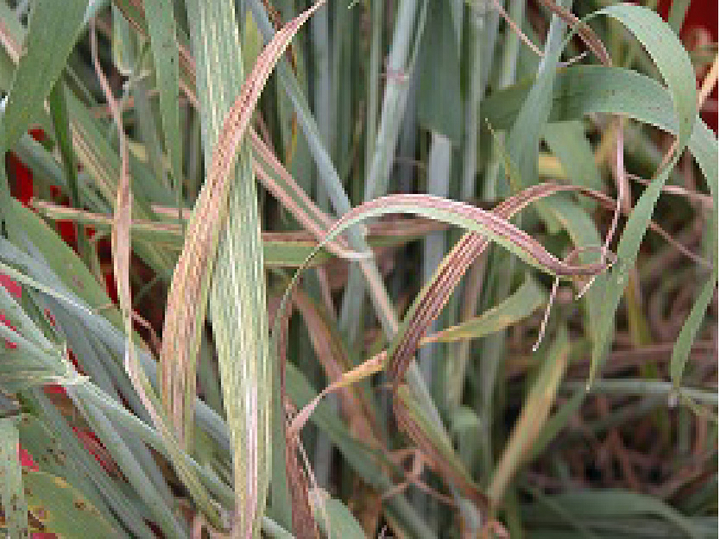Leaf stripe of barley
Pyrenophora graminea
Damage symptoms

The fungus forms grayish-brown to reddish-brown stripes on affected plants, extending from the leaf base to the leaf tip. With increasing maturity, the leaves tear open at the stripes. Plants exhibit stunted growth and sporadic spike formation occurs, with the spikes being numb and containing no fruit. Barley streak disease is clearly visible from shooting (early growth), better from ear pushing.
Last updated: 10.04.2025
automatically translated